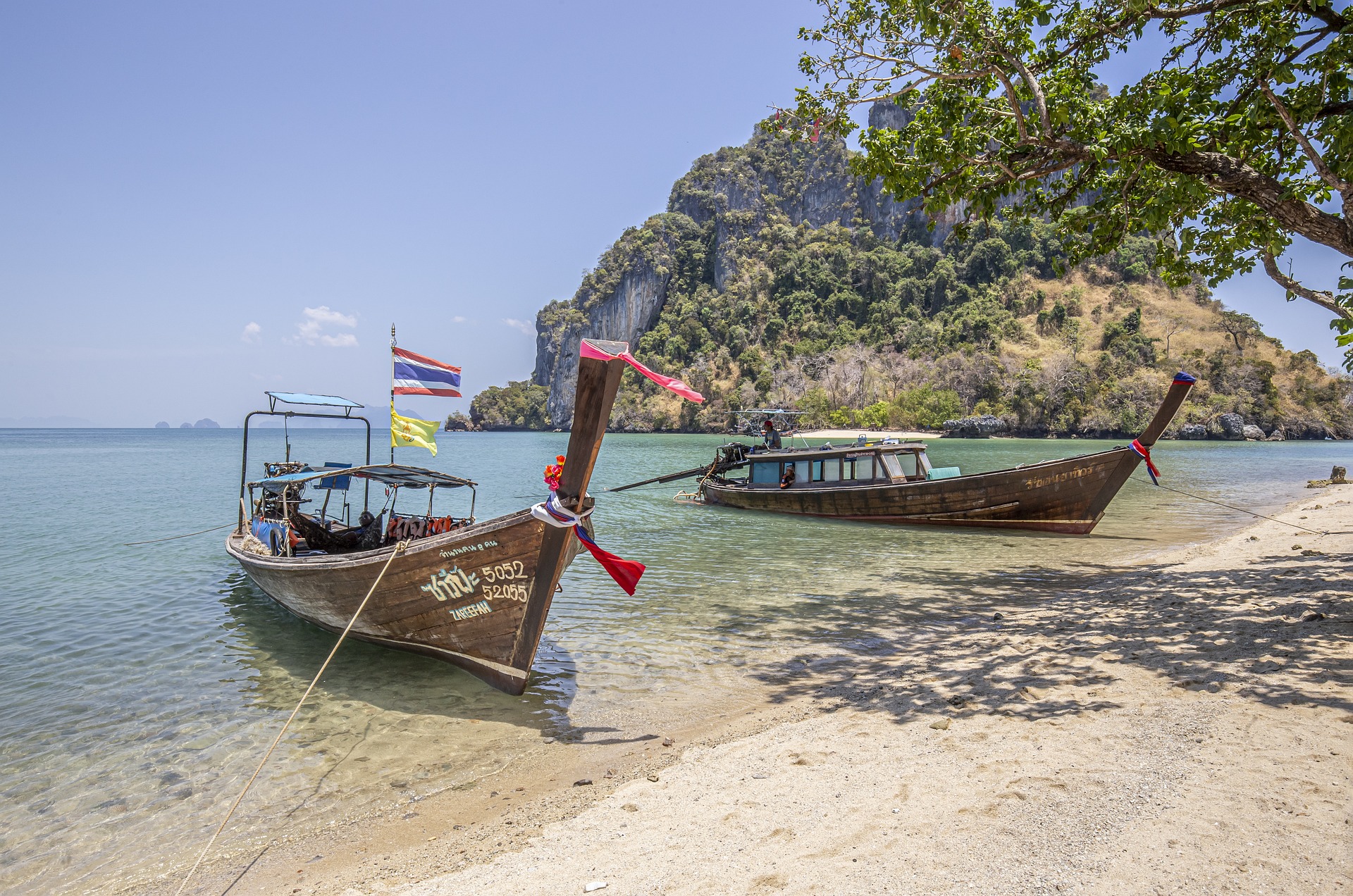Thailand Longtail Boats (“Rua Hang Yao”) are iconic symbols of Thai culture and traditional watercraft engineering. These unique vessels are widely used across Thailand for transportation, fishing, and tourism, particularly in coastal regions and riverine areas. Their distinctive appearance, with a narrow hull and a long propeller shaft extending behind the boat, makes them both functional and visually striking.
Design and Structure
- Hull:
- Narrow and elongated, designed for speed and maneuverability in shallow waters.
- Traditionally made of wood, though modern versions may incorporate fiberglass for durability.
- Engine:
- Powered by a repurposed automotive engine, such as a car or truck motor.
- The engine is mounted on a swiveling platform connected to a long propeller shaft, allowing the driver to steer easily.
- Propeller:
- The long shaft keeps the propeller submerged, even in shallow water, reducing the risk of damage.
Uses
- Fishing:
- Essential for coastal and riverine fishing communities, allowing fishermen to access areas other boats cannot reach.
- Transportation:
- Used to transport goods and people, especially in regions with extensive waterways, such as the Chao Phraya River and southern Thailand’s islands.
- Tourism:
- Popular among tourists for exploring scenic coastal areas, mangroves, and island-hopping adventures.
- Often brightly painted and adorned with colorful decorations or spirit offerings.
Cultural Significance
- The longtail boat is a quintessential part of Thai coastal and river life, reflecting the ingenuity and adaptability of local communities.
- Many boats are blessed with traditional ceremonies to ensure safety and prosperity for the owner and crew.
- Decorative elements, such as ribbons and garlands at the prow, are offerings to guardian spirits for protection during voyages.
Famous Locations for Longtail Boats
- Phuket: Island-hopping tours to destinations like the Phi Phi Islands and James Bond Island.
- Krabi: Used extensively in Ao Nang, Railay Beach, and surrounding islands.
- Bangkok: Seen on the Chao Phraya River and canals (klongs) for local transportation and tours.
- Chiang Mai: Occasionally found on rivers like the Ping River, though less common in the north.
Advantages
- Versatility: Can operate in both shallow waters and deeper seas.
- Cost-Effective: Repurposing engines and using locally available materials reduces costs.
- Maneuverability: The long propeller shaft provides excellent control, even in narrow waterways.
Modern Changes
- While traditional wooden boats remain common, fiberglass hulls are becoming more prevalent due to their lightweight and low maintenance.
- Engines are increasingly modified to improve fuel efficiency and reduce environmental impact.
Interesting Facts
- The longtail boat design is believed to have been inspired by traditional Asian sampans and adapted for Thailand’s unique waterways.
- The boats often bear names or inscriptions, usually in Thai script, adding a personal touch.
- Their distinctive chugging sound is instantly recognizable and synonymous with the experience of coastal Thailand.
Summary
Thailand’s Rua Hang Yao is more than just a means of transportation; it is a cultural icon and a testament to the resourcefulness of Thai communities. Whether ferrying locals or tourists, these boats provide an authentic glimpse into the country’s rich maritime heritage.
Visited 199 times, 24 visit(s) today
Views: 378
Subscribe to the newsletter:
